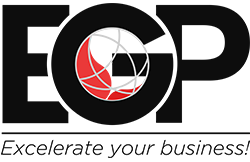By Om Kapoor (This article first appeared in the OneStream Blog on September 19, 2024)
Introduction
The banking industry faces immense pressure to deliver fast, accurate financial reporting despite fluctuating interest rates, economic volatility, and stringent regulatory requirements. To remain competitive, financial institutions must do so while maintaining operational efficiency and embracing data-driven decision-making. Corporate Performance Management (CPM) software thus plays a crucial role in modern banking. But CPM isn’t just a tool — it’s essential for streamlining financial operations and supporting real-time strategic decision-making.
What Is CPM, and Why Does It Matter in Banking?
CPM software integrates financial planning, budgeting, forecasting, reporting, and analytics into a unified system. For banks, this integration eliminates disjointed spreadsheets and siloed systems. The result is a comprehensive view of financial data that empowers institutions to plan, monitor, and evaluate performance across the organization.
Amid market volatility, shifting interest rates, and evolving regulatory requirements, such integration is critical for banking. CPM ultimately enables banks to transition from manual processes to an automated approach, consolidating financial data, improving accuracy, and speeding up decision-making.
How CPM Enhances Financial Operations
CPM transforms critical areas of financial operations, allowing banks to do the following:
- Planning and Forecasting: CPM creates accurate forecasts and budgets using real-time data, allowing for scenario planning and rapid adjustments to market shifts (e.g., interest rate changes, economic downturns).
- Profitability Analysis: CPM delivers granular insights into costs, enabling banks to uncover inefficiencies and optimize resource allocation by identifying the most profitable products, services, and customer segments.
- Liquidity and Cash Flow Management: Real-time visibility into cash flow is essential for effective liquidity management. CPM equips banks with tools to monitor and manage liquidity, ensuring that — even during market volatility — banks meet all financial obligations.
- Regulatory Reporting and Compliance: CPM automates compliance reporting and, in doing so, reduces errors, increases transparency, and ensures timely, accurate submissions.
- Risk Management and Stress Testing: CPM’s built-in stress testing and risk scenario analysis capabilities help banks anticipate and prepare for potential risks, allowing banks to respond proactively.
Key Benefits of CPM for Banks
Adopting CPM provides several key benefits for banks:
- Data-Driven Decision-Making: CPM leverages real-time insights and advanced analytics — enabling faster, more informed decision-making crucial in today’s dynamic environment.
- Operational Efficiency: Automating reporting, forecasting, and budgeting processes eliminates bottlenecks, reduces errors, and accelerates financial cycles — freeing finance teams to focus on more strategic tasks.
- Collaboration and Transparency: A centralized CPM platform ensures all departments work with consistent data — improving collaboration and organizational goal alignment.
- Scalability: CPM solutions scale with a bank’s growth — supporting both expansion and the rollout of new products while ensuring alignment between financial operations and strategic objectives.
The Future of CPM in Banking
The banking sector’s ongoing transformation makes CPM even more critical. Today, AI-driven forecasting, machine learning, advanced analytics, and other emerging technologies are already redefining how banks handle financial planning, forecasting, and reporting. These innovations allow for more precise predictions, seamless workflows, and deeper insights into financial performance, providing banks with a distinct competitive edge.
In such a dynamic environment, banks that embrace real-time financial insights and data-driven decision-making will thrive. CPM serves as the foundation for this shift, enabling institutions to respond quickly to market changes, enhance cost management, and make informed decisions. And as regulatory requirements evolve, the need for integrated CPM solutions will continue to grow and thus drive success in the financial sector.
Take Finance Further with OneStream
Through a unified platform, OneStream integrates financial, operational, and line-of-business planning processes into a single source of truth. This approach supports precise decision-making while addressing the evolving demands of the banking industry.
With OneStream, banks can streamline key functions—such as capital allocation, liquidity management, and risk mitigation—while ensuring compliance with global accounting standards. OneStream’s adaptable architecture ultimately optimizes costs, enhances efficiency, and positions institutions to seize growth opportunities in today’s evolving business environment.
The Carlyle Group, a global alternative asset manager overseeing $376 billion in assets, faced challenges with outdated financial systems. By transitioning to OneStream, Carlyle simplified its IT infrastructure, reduced costs, and significantly improved operational efficiency. The platform streamlined financial consolidation, reporting, and planning, enhancing both accuracy and visibility in budgeting and forecasting.
Several key processes saw dramatic time reductions: consolidating a full year of GAAP actuals was reduced from 6-8 hours to 3-4 hours, while also incorporating more detailed project-level data than Hyperion had provided. Submitting revenue and expense budget updates, once a week-long task, now takes just 5-10 minutes. Similarly, updating allocation metrics and reviewing their impact shrank from one week to 30-60 minutes, with the process now running four times daily. Updating headcount assumptions and reviewing the impact improved from one week to just 20 minutes.
Real-time reporting and decentralized analysis empowered Carlyle to make faster, more informed decisions. Additionally, OneStream’s People Planning enhanced workforce modeling, driving further efficiency across the organization.
Key Features of OneStream for Banking:
- Unified Finance Platform: Integrates financial planning across the Office of Finance and lines of business, promoting synergy in decision-making.
- Single Source of Truth: Ensures accurate, reliable data for actionable insights in volatile markets.
- Adaptive Architecture: Flexibly adjusts to organizational needs, focusing on critical financial aspects (e.g., asset management, cash flow optimization, and regulatory compliance).
- Regulatory Compliance Assurance: Mitigates compliance risks by ensuring adherence to global accounting standards.
- Financial Intelligence: Simplifies complex operations like account structures, intercompany eliminations, and foreign currency translation, reducing operational overhead.
- Scalability: Enables institutions to manage resources efficiently and adapt to changing market conditions, fostering agility and strategic growth.
Conclusion
In a rapidly changing financial landscape, having a unified and adaptable solution like OneStream is essential for banks to stay competitive. Banks using OneStream’s powerful CPM platform have taken the next step toward streamlining financial operations, improving decision-making, and ensuring regulatory compliance.



